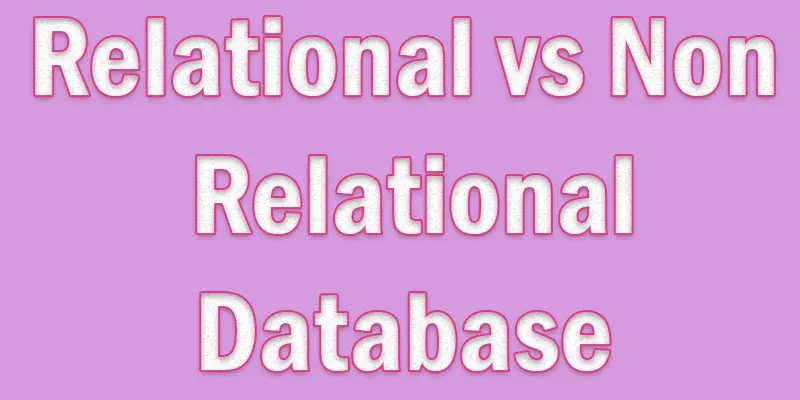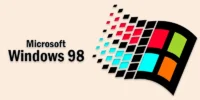Relational vs Nosql | Differences, Examples Pros & Cons
Published: 31 May 2025
Relational vs Non-Relational Database
Databases help store and manage information, but not all databases work the same way. Relational (SQL) and non-relational (NoSQL) databases are the two primary varieties. Relational databases organize data in tables, while non-relational databases use a flexible structure like documents or key-value pairs. Choosing the right one depends on your needs—structured data works best with SQL, while NoSQL is great for big, fast-changing data. In this blog, we’ll explore their differences and help you decide which one is best for you!
What is a Relational Database?
An organized, table-based format is used to store data in relational databases. It organizes information into rows and columns, making it easy to manage and retrieve data using SQL (Structured Query Language).

Key Features of a Relational Database
- Table Structure – Data is stored in tables with predefined columns.
- Primary Keys – Each table has a unique identifier (like an ID).
- Relationships – Tables are connected through foreign keys.
- ACID Compliance – Ensures data accuracy and reliability.
Examples of Relational Databases
- Mysql – Used in web applications and e-commerce.
- Postgresql – Popular for enterprise applications.
- Microsoft SQL Server – Used in corporate environments.
- Oracle Database – Used for large-scale business applications.
What is a Non-Relational Database?
A non-relational database, sometimes known as a NoSQL database, is a kind of database that stores data without the use of tables, rows, and columns. Rather, it uses more adaptable formats, such as documents, graphs, key-value pairs, or wide-column storage, to store data. Because of this, it’s perfect for managing big, unstructured, or dynamic data.
Important Characteristics of a Non-Relational Database
- Flexible Schema – Data can be stored without a fixed structure.
- Scalability – Easily handles big data and grows with demand.
- Multiple Data Models – Uses different formats like JSON, key-value, or graphs.
- High Speed – Optimized for fast performance in real-time applications.
Types and Examples of Non-Relational Databases
- MongoDB is document–based and saves data in documents that resemble JSON.
- Redis is an excellent key-value store for caching and real-time data.
- Column-Based – Apache Cassandra (used for large-scale data storage).
- Graph-Based – Neo4j (used for social networks and recommendation systems).
Differences Between Relational and Non-Relational Databases
| Relational Database (SQL) | Non-Relational Database (NoSQL) |
|---|---|
| Stores data in tables. | Stores data in documents, key-value, graphs, etc. |
| Fixed (Predefined structure). | Flexible (Can change anytime). |
| Uses SQL (Structured Query Language). | Non-Relational Database (Nosql) |
| Vertical (Adds power to one server). | Horizontal (Adds more servers). |
| Best for structured data. | Best for semi-structured or unstructured data. |
| Slower for big data. | Faster for big and real-time data. |
| Banking, business apps, e-commerce. | Uses Nosql (Different query methods). |
When to Use a Relational Database?
You should use a relational database (SQL) when you need structured, secure, and consistent data storage.
When Data Needs a Fixed Structure
- If your data follows a clear format (like customer records with names, emails, and phone numbers), a relational database is the best choice.
When Data Integrity is Important
- Relational databases follow ACID (Atomicity, Consistency, Isolation, Durability) rules, ensuring accurate and reliable data storage.
- Ideal for banking, finance, and healthcare, where mistakes can cause serious problems.
When You Need Complex Queries
- SQL databases allow you to search, filter, and join data efficiently using structured queries.
- Best for applications that require detailed reporting.
When Transactions Are Frequent
- If your system involves multiple users making transactions at the same time (e.g., online shopping or banking apps), relational databases handle this well.
When Security is a Priority
- Used in corporate systems where user authentication, access control, and encryption are needed.
Examples of Relational Database Use Cases
- E-commerce websites (Amazon, Shopify).
- Banking & finance apps (PayPal, banking systems).
- HR and payroll systems (Employee records, salaries).
- Healthcare systems (Patient records, hospital management).

When Should Non-Relational Databases Be Used?
You should use a non-relational database (Nosql) when you need flexibility, fast performance, and scalability.
When Data is Unstructured or Changing
- If your data does not fit into a fixed table format, Nosql is a great choice.
- Ideal for social media posts, chat messages, videos, and logs.
When You Need High Speed and Scalability
- Nosql databases handle huge amounts of data and grow easily by adding more servers (horizontal scaling).
- Best for real-time applications, IoT, and big data analytics.
When You Need Flexible Data Storage
- If your data has different formats (JSON, XML, graphs), NoSQL databases work better.
- Useful for content management systems, recommendation engines, and AI-driven apps.
When You Don’t Need Complex Transactions
- Nosql is better for fast data access rather than complex multi-step transactions.
- Best for gaming leaderboards, caching, and real-time analytics.
When Handling Large-Scale Web Applications
- Popular for apps with millions of users and fast-growing data.
- Used by Facebook, Twitter, and Netflix.
Examples of Non-Relational Database Use Cases
- Social media platforms (Facebook, Instagram).
- Real-time messaging apps (WhatsApp, Slack).
- Big data analytics (Google, Amazon recommendations).
- Iot and sensor data (Smart home devices).
Pros and Cons of Relational and Non-Relational Databases
Pros
- Structured & organized (table format).
- Ensures data accuracy (ACID compliance).
- Supports complex queries (SQL language).
- High security & integrity (used in banking).
Cons
- Less flexible (schema changes are hard).
- Hard to scale (vertical scaling needed).
- Slower for big data (performance drops).
- More setup & maintenance required.
Pros and Cons of Non-Relational Databases (NoSQL)
Pros
- Highly scalable (adds more servers easily).
- Flexible schema (stores any data format).
- Fast performance (good for real-time apps).
- Best for large, changing data (social media, IoT).
Cons
- No standard query language (varies by type).
- Less consistent (weak ACID compliance).
- Difficulty with complex queries (no joins).
- Security challenges (weaker than SQL).

Conclusion About Non-Relational Database
We’ve covered relational vs non-relational databases in detail. If you need structured data, high security, and complex queries, go for relational databases. But if you want speed, flexibility, and scalability, non-relational databases are better. Based on your project needs, choose wisely! I recommend SQL for financial systems and NoSQL for real-time apps. Want to learn more about databases? Stay tuned for more tech insights and leave your thoughts in the comments!
FAQS
Use SQL databases when you need structured data, high security, and complex queries (e.g., banking systems). Choose Nosql if you need speed, flexibility, and scalability for large or unstructured data (e.g., social media, IoT). Your choice depends on the data structure and application needs.
Relational databases (SQL) store structured data in tables and follow ACID rules for consistency. Nosql databases can store unstructured or semi-structured data in a number of formats, such as documents, graphs, and key-value pairs. NoSQL is superior for massive data and real-time applications, while SQL is excellent for transactions.
Nosql is better for scalability, flexibility, and handling large, unstructured data. It works well for real-time applications, big data analytics, and distributed systems. However, SQL is still better for structured data and financial transactions.
No, SQL (Structured Query Language) is the query language used to administer relational databases. Relational databases like Mysql, Postgresql, and Oracle employ SQL to store and manage data in tables. SQL helps in retrieving, updating, and organizing data efficiently.
Netflix primarily uses NoSQL databases like Apache Cassandra and Amazon DynamoDB for scalability and fast data access. However, it also uses SQL databases for structured data storage and analysis. The combination helps Netflix handle massive streaming data and user recommendations.
A hierarchical database follows a tree-like structure, where data is stored in parent-child relationships. A real-life example is an organizational chart, where a company’s CEO is at the top, managers are below, and employees are further down. Another example is an XML file or an old IBM Information Management System (IMS).

- Be Respectful
- Stay Relevant
- Stay Positive
- True Feedback
- Encourage Discussion
- Avoid Spamming
- No Fake News
- Don't Copy-Paste
- No Personal Attacks

- Be Respectful
- Stay Relevant
- Stay Positive
- True Feedback
- Encourage Discussion
- Avoid Spamming
- No Fake News
- Don't Copy-Paste
- No Personal Attacks





